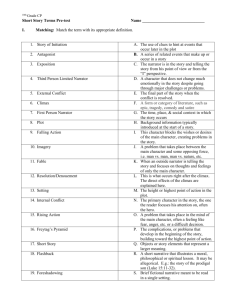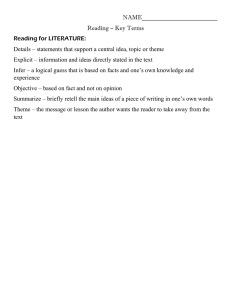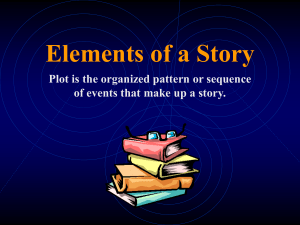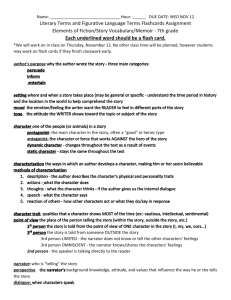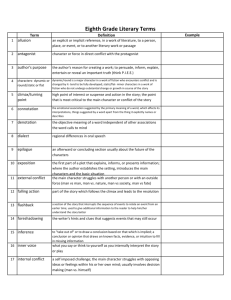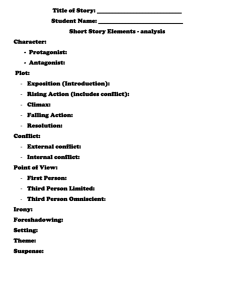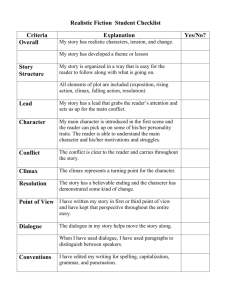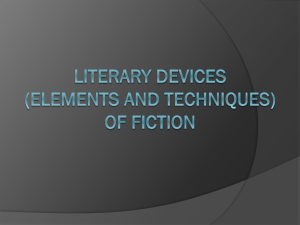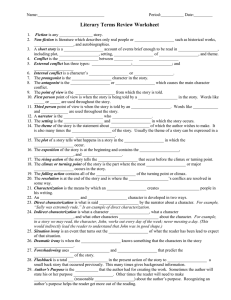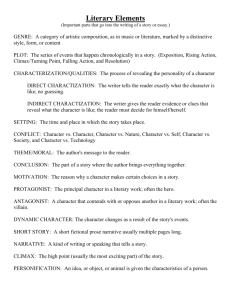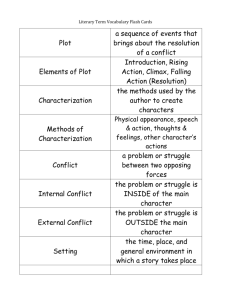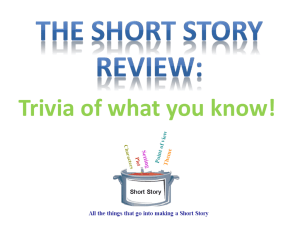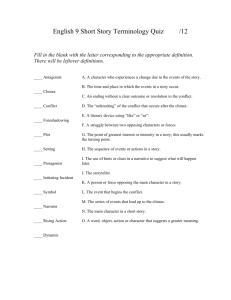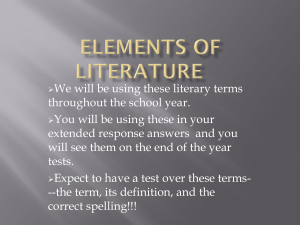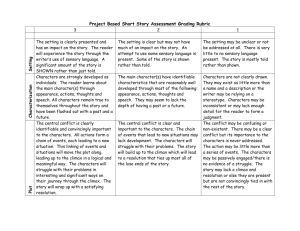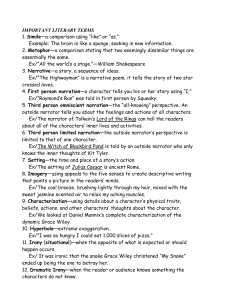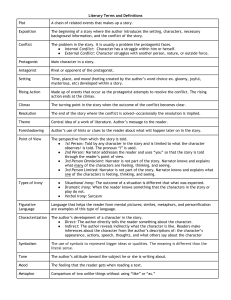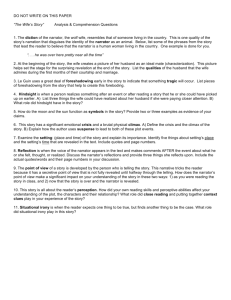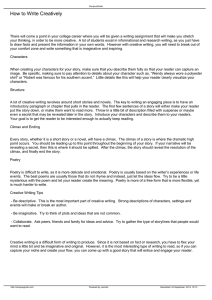Story Elements of Fiction Study Guide Mrs. Bos` ELA Class Plot
advertisement
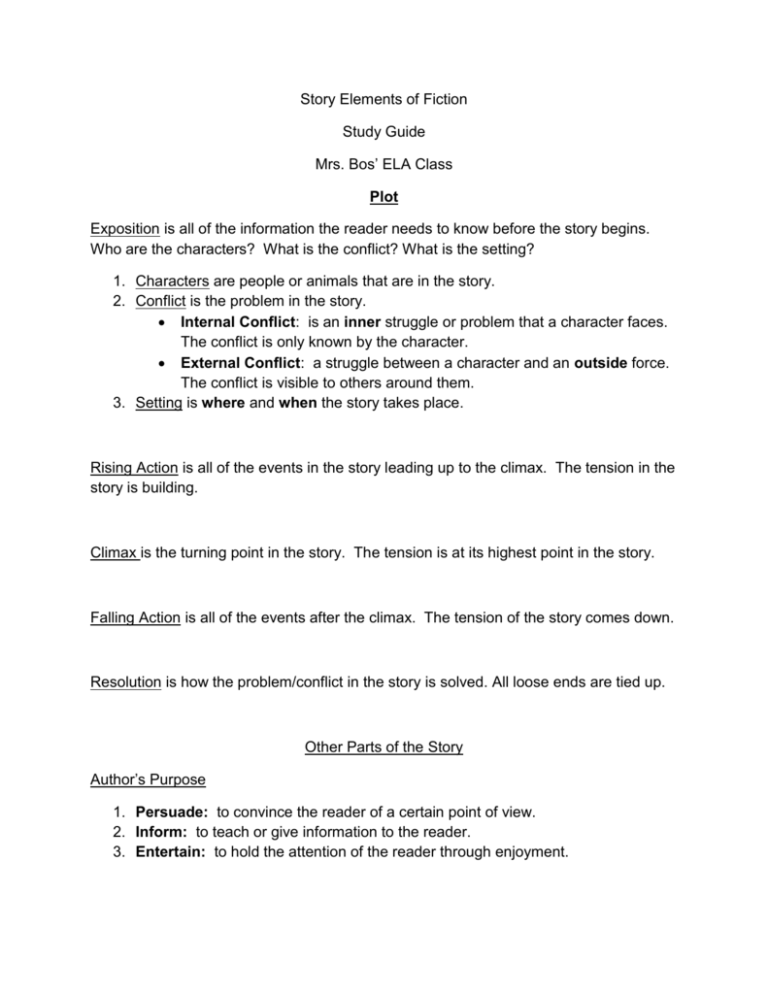
Story Elements of Fiction Study Guide Mrs. Bos’ ELA Class Plot Exposition is all of the information the reader needs to know before the story begins. Who are the characters? What is the conflict? What is the setting? 1. Characters are people or animals that are in the story. 2. Conflict is the problem in the story. Internal Conflict: is an inner struggle or problem that a character faces. The conflict is only known by the character. External Conflict: a struggle between a character and an outside force. The conflict is visible to others around them. 3. Setting is where and when the story takes place. Rising Action is all of the events in the story leading up to the climax. The tension in the story is building. Climax is the turning point in the story. The tension is at its highest point in the story. Falling Action is all of the events after the climax. The tension of the story comes down. Resolution is how the problem/conflict in the story is solved. All loose ends are tied up. Other Parts of the Story Author’s Purpose 1. Persuade: to convince the reader of a certain point of view. 2. Inform: to teach or give information to the reader. 3. Entertain: to hold the attention of the reader through enjoyment. Point of View First Person Point of View: A character in the story is the narrator. This character is telling the story. The narrator uses the pronouns I, me and we. In first person point of view, readers learn about events as the narrator learns about them. Third Person Point of View: The story is being told by an outside observer (someone who is not in the story). The author uses the pronouns he, she and they. In third person point of view, the author can tell about the thoughts, actions and feelings of the other characters. Theme is the lesson learned or the moral of the story.
